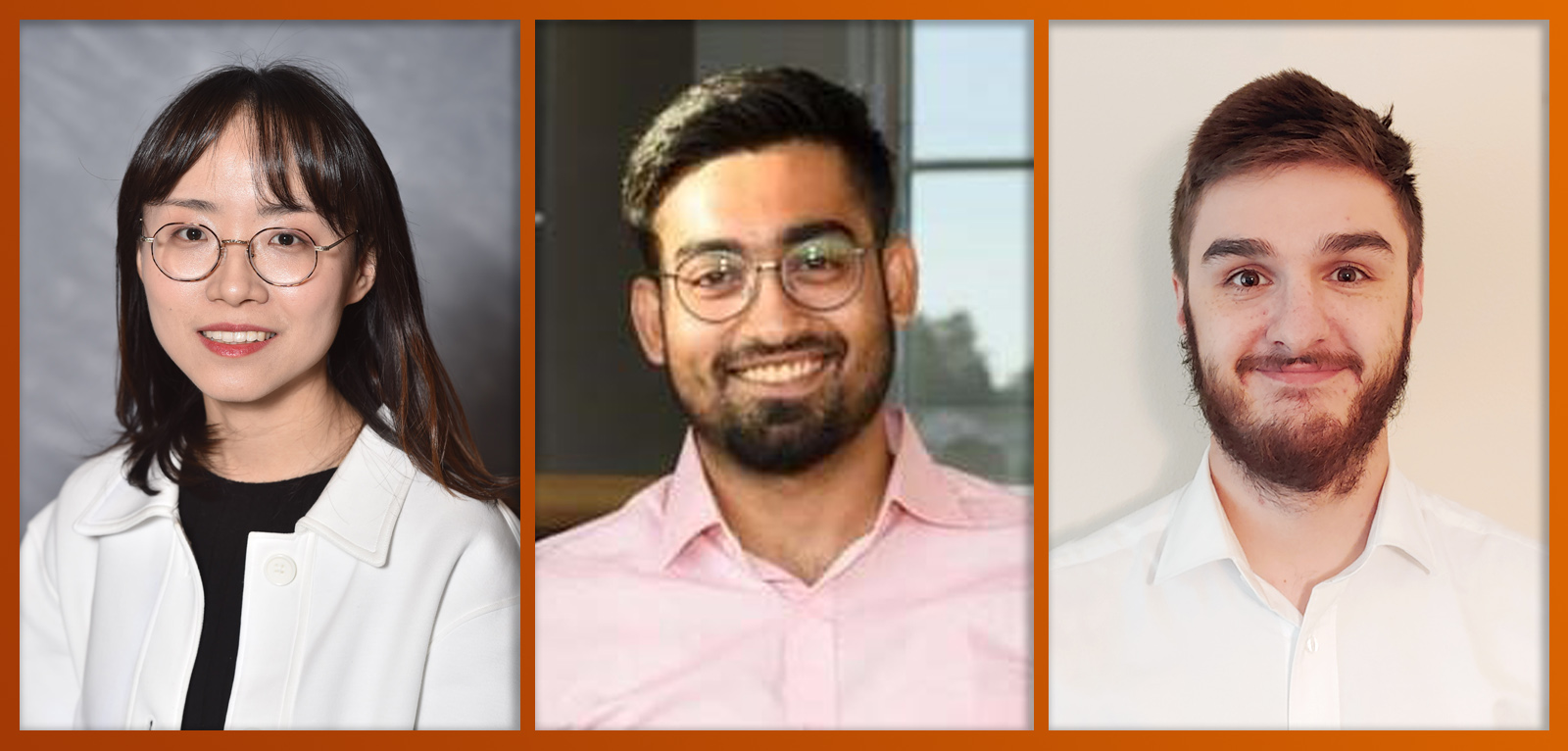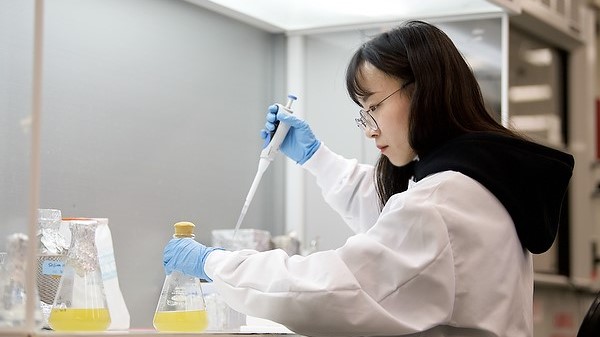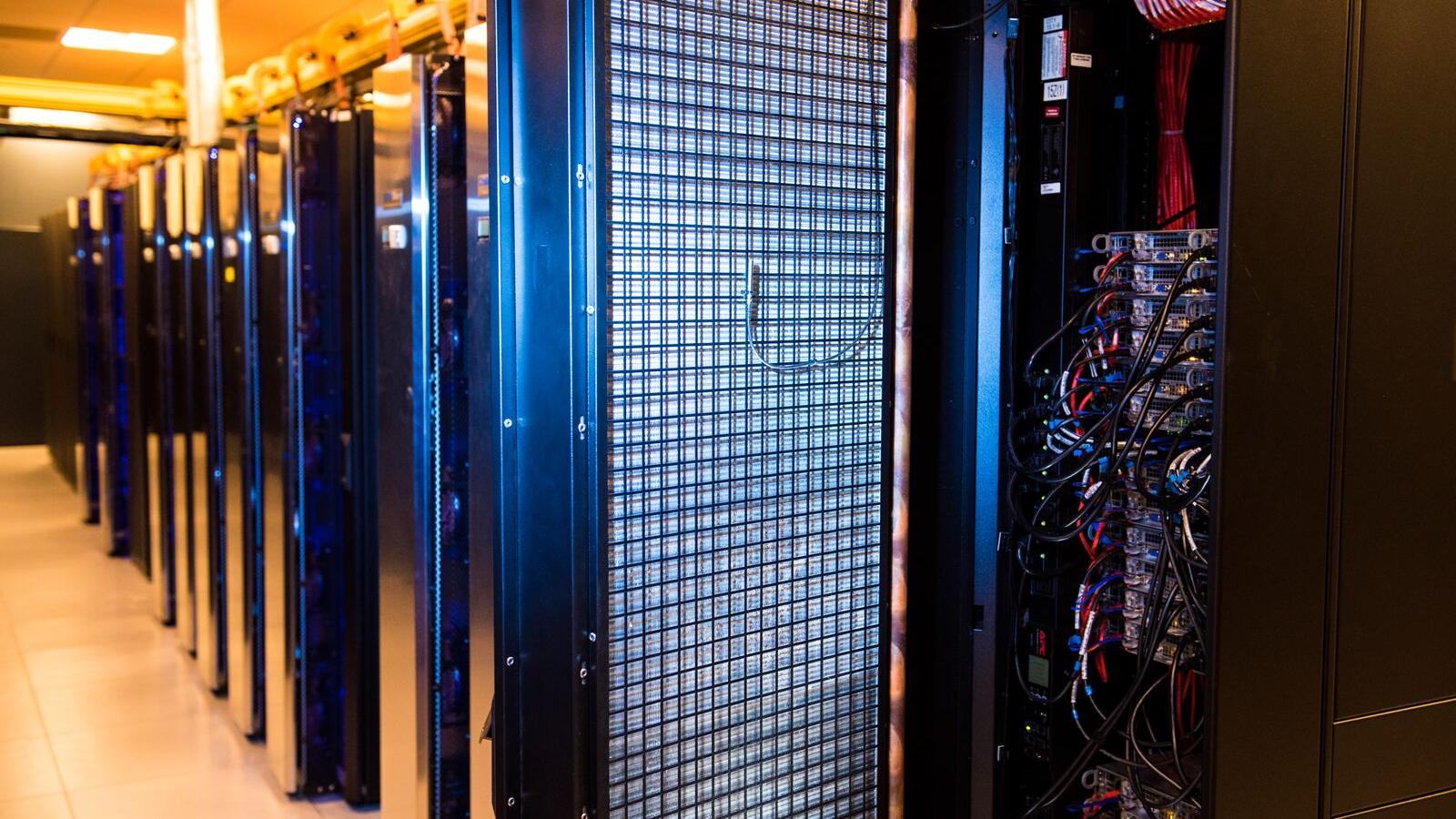For Ben Schuessler, working at a national laboratory is the pinnacle of career success.
"I knew early on that I wanted to do research for a living," he said. "A national laboratory is the best of the best. Even as an undergraduate, I knew it would be my end goal."
Schuessler can mark that goal off his bucket list. This spring, he joined Pacific Northwest National Laboratory (PNNL) in a postdoctoral position doing metals and multi-materials research.
Schuessler is one of three researchers who are launching their careers at the laboratory after graduating this May from the PNNL and Washington State University (WSU) Distinguished Graduate Research Program (DGRP). DGRP graduates Xiaolu Li and Monish Mukherjee are also continuing at the laboratory.
Through the regional partnership, select WSU graduate students spend the last two years of their doctoral program training alongside scientists and engineers at the laboratory. The students conduct hands-on research in existing areas of collaboration between the two institutions. These areas include nuclear science and engineering, electric power grid, bioproducts, catalysis, environmental and soil science, and materials science, among others.

A training ground for budding researchers
Li, who earned a doctorate in biological and agricultural engineering, will join PNNL in July as a postdoctoral researcher in integrative omics. Li spent her DGRP experience studying biological processes that could be used to help make biofuels.
Li said she became a more independent researcher through the program. At the same time, it offered valuable opportunities for collaboration and mentorship from experienced and accomplished researchers, including Laboratory Fellow Wei-Jun Qian.
"Xiaolu has demonstrated a great degree of productivity and excellence in her graduate research," said Qian, who served as Li's advisor throughout the program. "Her success is not only due to her diligence and patience, but also her willingness to learn new technologies and to tackle biological questions using a multidisciplinary approach."

Connecting research to industry
Mukherjee joined PNNL's Electricity Infrastructure and Buildings Division in May as an electrical engineer after completing his PhD through the Distinguished Graduate Research Program. His doctoral research focused on designing smart, reliable grid architectures that enable consumers to actively participate in the power system markets.
He said that the program bridged academia and industry and allowed him to delve deeper into the real-world implications of his research.
"The top-notch commercial and simulation tools at the lab allowed me to focus more on the implementation and industry aspects of my research," he said. "The experience broadened the scope of my research to envision problems beyond my current topics and provided the necessary skills for my career."
For Schuessler, the program was a way to make valuable research and professional connections.
"The DGRP is a chance to extend your reach as a student and researcher into an industrial setting that is meant to support you and your projects," Schuessler said. "The people you meet through this program are outstanding and excellent contacts to have."
In his dissertation, Schuessler helped develop statistical methods that can extract three-dimensional information from two-dimensional pictures to study polycrystalline materials. He also studied microstructures in metallic nuclear fuels for advanced reactors.
"It has been a pleasure to have Ben here at the lab," said Vineet Joshi, a materials scientist who advised Schuessler. "He has an incredible drive to apply his skillset to a variety of projects and is always eager to learn new technologies."
Schuessler is now part of the Solid Phase Processing and Performance team in PNNL's Energy Processes and Materials Division. Their research to understand how metals and other materials interact can be applied to solve many manufacturing problems, such as how to make lighter vehicles.

A "gateway" to national laboratory careers
In addition to the joint WSU graduate research program, PNNL has similar partnerships with Oregon State University, the University of Washington, Iowa State University, and North Carolina State University. Each year, approximately 20 doctoral students in science, technology, engineering, and mathematics (STEM) from the participating universities are selected to work on nationally relevant research aligned with PNNL's mission.
"The Distinguished Graduate Research Program plays an important role in broadening the pipeline of talent for PNNL and the U.S. Department of Energy," said Suresh Baskaran, director of research partnerships at PNNL. "Through our university partnerships, we are helping to build a highly skilled STEM workforce prepared to solve our world's toughest science and engineering problems."
In addition to the three graduates continuing at PNNL, the 2021 WSU-PNNL DGRP spring class included Gowtham Kandaperumal, who accepted a position in the utility industry, and Shuo Feng, who is pursuing postdoctoral opportunities.
"This year's graduating class of DGRP students is the largest so far, and we are really excited to see that many of the students are continuing their research careers, including several students accepting positions at PNNL," said Asaph Cousins, WSU DGRP coordinator and a professor in the College of Arts and Sciences School of Biological Sciences.
Schuessler said he found a home not only for his research through the program, but also for his family.
"My family and I are thrilled to stay in the Richland area because we promptly fell in love with the landscape, weather, and people," he said.
For him, the joint graduate research program was an ideal segue from doctoral studies to dream job.
"The program was an incredible opportunity and the gateway into my career goal of working in a national laboratory," Schuessler added. "PNNL is where I wanted to be, and the DGRP was my shot to do it."






